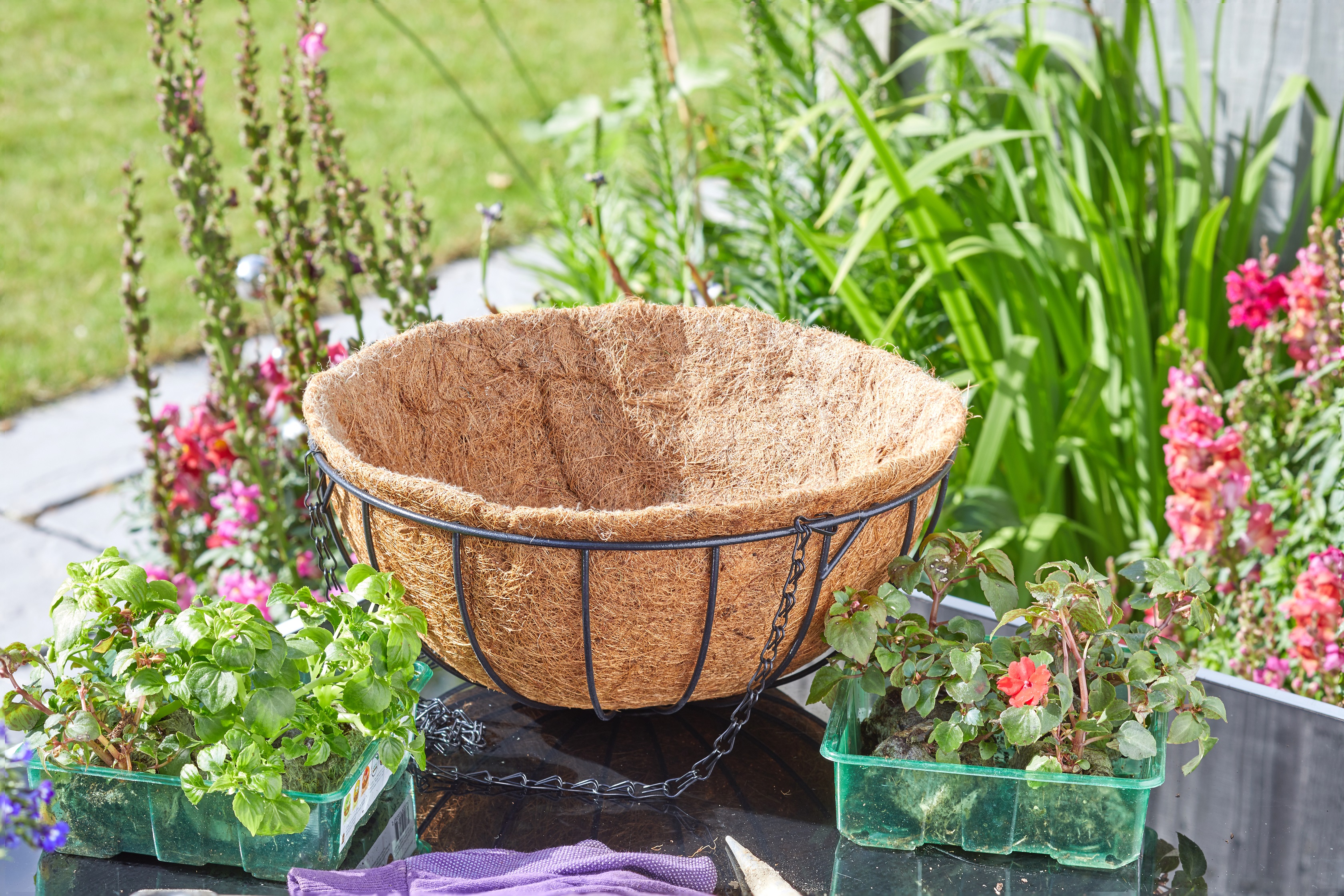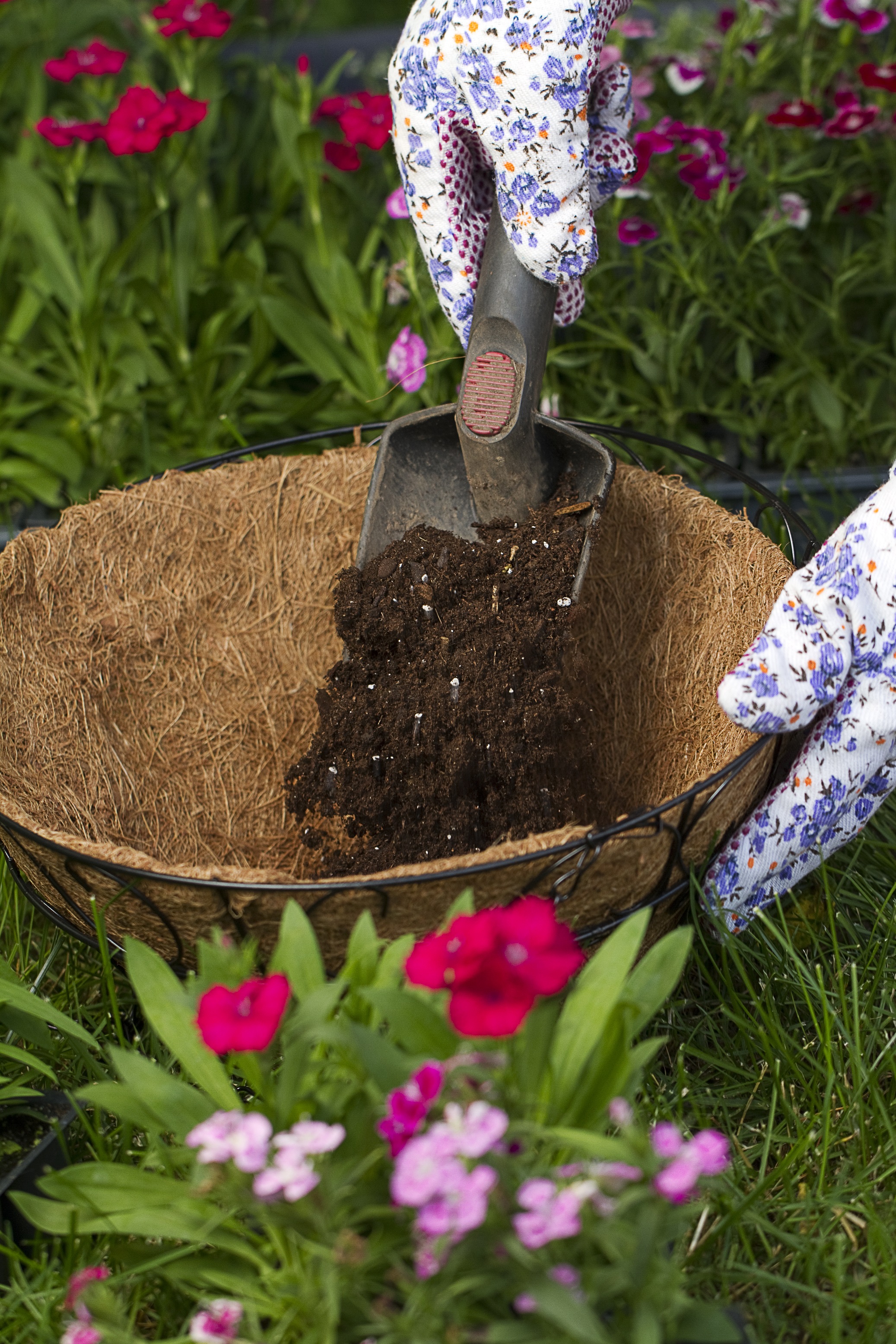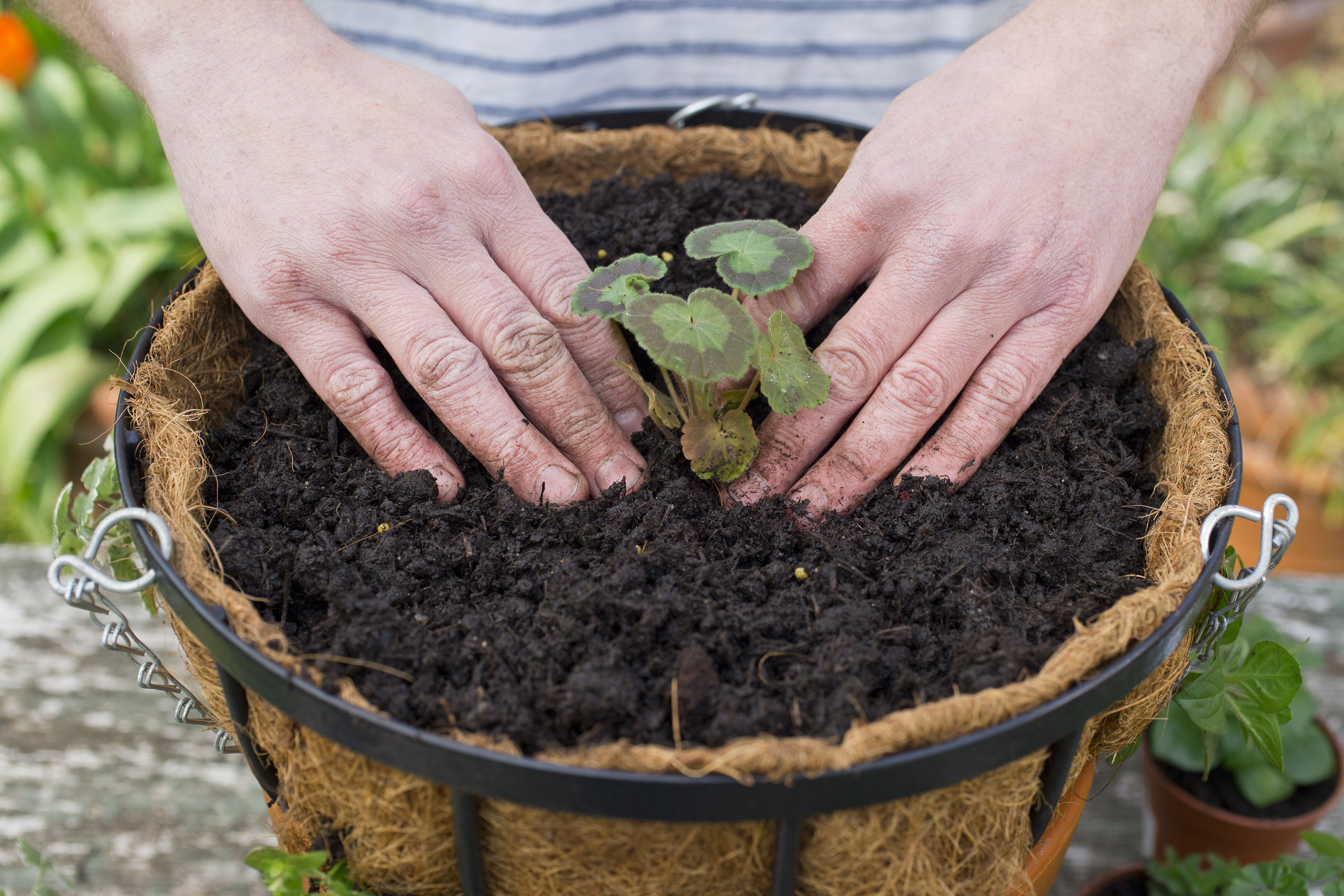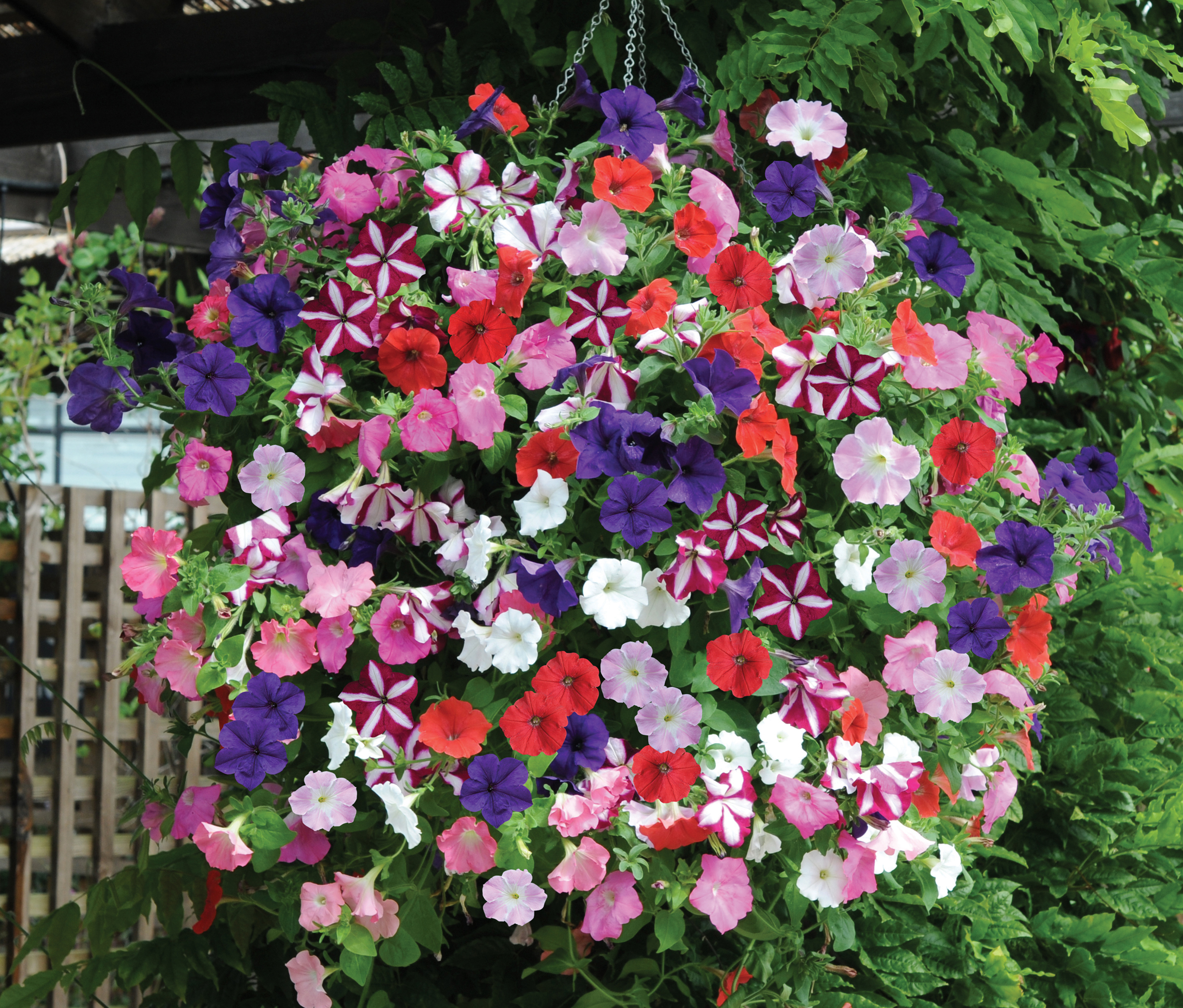How to make a hanging basket
Want to know how to make a hanging basket? Here's how to green up your life and take your gardening skills up to the next level


Take your gardening skills up a notch and learn how to make a hanging basket to make the most of your outdoor space. It’s easy to grow and care for plants in hanging baskets, and the results can be very rewarding.
There are no rules for hanging baskets. You could plant up a conventional wire basket or seek out a more unusual hanging container, for example a cone-shaped rattan planter on chains, or even make your own. You just need your chosen container and a firmly affixed hook or bracket to hang it from. And who says a hanging basket has to hang in a conventional way? You could hang a container or group of containers from a wall or fence – it’s a great way to brighten up any space.
Follow our guide to making a hanging basket and you'll soon be enjoying colourful blooms at eye level, then check out our hanging basket ideas for even more inspiration.
How to make a hanging basket

Fill your hanging basket with peat-free compost, using a basket liner to keep compost and plants in place, and to help retain moisture. The liner pictured is from Dobbies, and is made of coconut fibre, which is tough and biodegradable, and allows good drainage while still minimising water loss
If you choose a wire basket for your hanging basket, you'll need to line it with moss or a hanging basket liner. These often have pre-punched holes so that you can plant all round the container – including the sides and undersides.
It’s a good idea to use a plastic disc to act as a kind of saucer so that the compost doesn’t seep out when you water the basket. A plastic lid from a cream or yogurt pot will do the trick, just place it at the bottom of the basket before you add any compost.
What is the best compost for hanging baskets?
It's best to use peat-free multi-purpose potting compost. You may wish to add perlite, vermiculite or water retaining granules to the mix to help reduce the amount of watering you have to do. Another idea to aid watering, if you can afford the space, is to sink a small plastic flowerpot into the compost in the centre of the basket before adding the plants. You will water directly into this empty pot and it will act as a kind of reservoir allowing water to slowly sink into the compost.
How many plants should I use in a hanging basket?
The general guide when planting a hanging basket is to use one plant per inch of basket diameter – so 12 plants per 30cm (12") hanging basket. If your selection includes larger plants such as fuchsias and geraniums (pelargoniums), you won’t need so many to fill the space.
Planting your hanging basket

Once you're happy with the positioning, remembering to place the taller plants, such as the pelargoniums here, in the centre of the basket, you can start to plant them
Before you start planting, arrange your chosen plants, still in their pots, on top of the compost in the basket to see how they look together and to ensure you get the right arrangement. Place the tallest, most dramatic plants in the centre of the basket, and shorter, and more delicate trailing plants around the edges so they can tumble over and eventually cover the sides of the basket. Once you’re happy with the arrangement of plants you can remove them from their individual pots and plant them in your hanging basket and hang it up.
How to care for your hanging basket

Keep container plants well watered and well fed and they'll reward you with colour throughout the summer. This hanging basket of petunia easywave is from Thompson & Morgan
Because hanging baskets are exposed to the elements on all sides they often dry out quickly in warm and breezy conditions. Check the compost every day to ensure it hasn’t dried out and water well every few days. You may need to include a liquid feed to get the most out of your plants.
More plant advice:
- The best bee-friendly plants to try in your garden
- Shade loving plants that are perfect for dark corners
- Indoor plants for every room in your home
After a brief foray into music journalism, fashion and beauty, Karen found herself right at home working on interior magazines with her role on Ideal Home magazine. She is now Homes Editor on Period Living magazine and loves the opportunity the job gives her to write about beautiful properties and gardens. She finds it inspiring to talk to people about their homes and gardens, and always comes away from interviews feeling inspired to try things in her own home.
